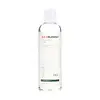What's inside
What's inside
 Key Ingredients
Key Ingredients

 Benefits
Benefits

 Concerns
Concerns

No concerns
 Ingredients Side-by-side
Ingredients Side-by-side

Water
Skin ConditioningButylene Glycol
Humectant1,2-Hexanediol
Skin ConditioningGlycerin
HumectantSodium Citrate
BufferingSalicylic Acid
MaskingCaprylyl Glycol
EmollientEthylhexylglycerin
Skin ConditioningPolyglyceryl-10 Laurate
Skin ConditioningPolyglyceryl-4 Laurate
EmulsifyingDipropylene Glycol
HumectantLactic Acid
BufferingGlycolic Acid
BufferingHydrolyzed Glycosaminoglycans
HumectantCapryloyl Salicylic Acid
ExfoliatingZinc PCA
HumectantCitric Acid
BufferingSodium Gluconate
Skin ConditioningSuccinic Acid
BufferingGluconolactone
Skin ConditioningSodium Chloride
MaskingSalix Alba Bark Extract
AstringentGaultheria Procumbens Leaf Extract
PerfumingSodium Hyaluronate
HumectantRosa Canina Fruit Extract
AstringentWater, Butylene Glycol, 1,2-Hexanediol, Glycerin, Sodium Citrate, Salicylic Acid, Caprylyl Glycol, Ethylhexylglycerin, Polyglyceryl-10 Laurate, Polyglyceryl-4 Laurate, Dipropylene Glycol, Lactic Acid, Glycolic Acid, Hydrolyzed Glycosaminoglycans, Capryloyl Salicylic Acid, Zinc PCA, Citric Acid, Sodium Gluconate, Succinic Acid, Gluconolactone, Sodium Chloride, Salix Alba Bark Extract, Gaultheria Procumbens Leaf Extract, Sodium Hyaluronate, Rosa Canina Fruit Extract
Water
Skin ConditioningDipropylene Glycol
HumectantPropanediol
SolventPentylene Glycol
Skin ConditioningNiacinamide
SmoothingButylene Glycol
HumectantGlycerin
HumectantPortulaca Oleracea Extract
Skin ConditioningCentella Asiatica Extract
CleansingFicus Carica Fruit Extract
HumectantSalix Alba Bark Extract
AstringentSaccharum Officinarum Extract
MoisturisingMalus Domestica Fruit Extract
AntioxidantAloe Ferox Leaf Extract
Skin ConditioningHydrogenated Lecithin
EmulsifyingPanthenol
Skin ConditioningRaffinose
Skin ConditioningAcrylates/C10-30 Alkyl Acrylate Crosspolymer
Emulsion StabilisingTromethamine
BufferingDisodium EDTA
Betaine
HumectantBeta-Glucan
Skin ConditioningMadecassoside
AntioxidantCeramide NP
Skin ConditioningMadecassic Acid
Skin ConditioningAsiaticoside
AntioxidantAsiatic Acid
Skin ConditioningEthylhexylglycerin
Skin Conditioning1,2-Hexanediol
Skin ConditioningCaprylyl Glycol
EmollientWater, Dipropylene Glycol, Propanediol, Pentylene Glycol, Niacinamide, Butylene Glycol, Glycerin, Portulaca Oleracea Extract, Centella Asiatica Extract, Ficus Carica Fruit Extract, Salix Alba Bark Extract, Saccharum Officinarum Extract, Malus Domestica Fruit Extract, Aloe Ferox Leaf Extract, Hydrogenated Lecithin, Panthenol, Raffinose, Acrylates/C10-30 Alkyl Acrylate Crosspolymer, Tromethamine, Disodium EDTA, Betaine, Beta-Glucan, Madecassoside, Ceramide NP, Madecassic Acid, Asiaticoside, Asiatic Acid, Ethylhexylglycerin, 1,2-Hexanediol, Caprylyl Glycol
 Reviews
Reviews

Ingredients Explained
These ingredients are found in both products.
Ingredients higher up in an ingredient list are typically present in a larger amount.
1,2-Hexanediol is a synthetic liquid and another multi-functional powerhouse.
It is a:
- Humectant, drawing moisture into the skin
- Emollient, helping to soften skin
- Solvent, dispersing and stabilizing formulas
- Preservative booster, enhancing the antimicrobial activity of other preservatives
Butylene Glycol (or BG) is used within cosmetic products for a few different reasons:
Overall, Butylene Glycol is a safe and well-rounded ingredient that works well with other ingredients.
Though this ingredient works well with most skin types, some people with sensitive skin may experience a reaction such as allergic rashes, closed comedones, or itchiness.
Learn more about Butylene GlycolCaprylyl Glycol is a humectant and emollient, meaning it attracts and preserves moisture.
It is a common ingredient in many products, especially those designed to hydrate skin. The primary benefits are retaining moisture, skin softening, and promoting a healthy skin barrier.
Though Caprylyl Glycol is an alcohol derived from fatty acids, it is not the kind that can dry out skin.
This ingredient is also used as a preservative to extend the life of products. It has slight antimicrobial properties.
Learn more about Caprylyl GlycolDipropylene Glycol is a synthetically created humectant, stabilizer, and solvent.
This ingredient helps:
Dipropylene glycol is technically an alcohol, but it belongs to the glycol family (often considered part of the ‘good’ alcohols). This means it is hydrating and gentle on skin unlike drying solvent alcohols like denatured alcohol.
As a masking agent, Dipropylene Glycol can be used to cover the smell of other ingredients. However, it does not have a scent.
Studies show Dipropylene Glycol is considered safe to use in skincare.
Learn more about Dipropylene GlycolEthylhexylglycerin (we can't pronounce this either) is commonly used as a preservative and skin softener. It is derived from glyceryl.
You might see Ethylhexylglycerin often paired with other preservatives such as phenoxyethanol. Ethylhexylglycerin has been found to increase the effectiveness of these other preservatives.
Glycerin is already naturally found in your skin. It helps moisturize and protect your skin.
A study from 2016 found glycerin to be more effective as a humectant than AHAs and hyaluronic acid.
As a humectant, it helps the skin stay hydrated by pulling moisture to your skin. The low molecular weight of glycerin allows it to pull moisture into the deeper layers of your skin.
Hydrated skin improves your skin barrier; Your skin barrier helps protect against irritants and bacteria.
Glycerin has also been found to have antimicrobial and antiviral properties. Due to these properties, glycerin is often used in wound and burn treatments.
In cosmetics, glycerin is usually derived from plants such as soybean or palm. However, it can also be sourced from animals, such as tallow or animal fat.
This ingredient is organic, colorless, odorless, and non-toxic.
Glycerin is the name for this ingredient in American English. British English uses Glycerol/Glycerine.
Learn more about GlycerinSalix Alba Bark Extract comes from the white willow tree, which is native to Europe and Central Asia.
Salix Alba Bark Extract has often been described as salicylic acid's cousin. This is due to the salicin it contains. However, studies are limited showing salix alba bark to be an effective salicylic acid alternative.
Salicin does have anti-inflammatory and antioxidant properties. It has shown to decrease the formation of inflammatory mediators, such as tumor necrosis factor-α and nuclear factor-kappa B. Salicin also has a mildly exfoliating effect on the skin.
Several other components in salix alba bark extract also contain antioxidant properties, such as flavonoids and polyphenols. Antioxidants may help with anti-aging as they neutralize harmful free-radical molecules.
Willow Bark extract has been used for thousands of years. Ancient civilizations used white willow to help treat pain and fevers.
Learn more about Salix Alba Bark ExtractWater. It's the most common cosmetic ingredient of all. You'll usually see it at the top of ingredient lists, meaning that it makes up the largest part of the product.
So why is it so popular? Water most often acts as a solvent - this means that it helps dissolve other ingredients into the formulation.
You'll also recognize water as that liquid we all need to stay alive. If you see this, drink a glass of water. Stay hydrated!
Learn more about Water